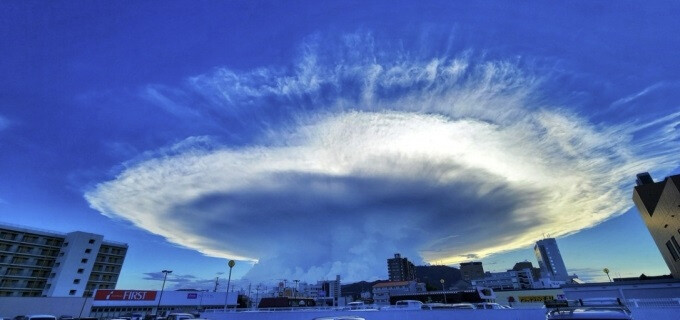
Recently, massive 'anvil clouds' have been repeatedly observed in the skies above the Japanese archipelago, escalating anxiety among local citizens. These clouds, which spread out wide like a blacksmith's anvil, are not merely a spectacular visual, but are being pointed to as a dangerous precursor signaling powerful storms and extreme weather phenomena.
On the 24th, numerous verified photos of anvil clouds, captured in Shikoku and Kanto regions including Kagawa and Tokushima prefectures, were successively posted on online platforms like X (formerly Twitter). Local broadcaster TBS reported on the appearance of these enormous clouds on the 22nd, confirming their size even via satellite imagery, with informants testifying that "they were as huge as Mount Fuji."
An 'anvil cloud' forms when a cumulonimbus cloud, driven by intense updrafts, reaches the tropopause – the boundary between the troposphere and stratosphere – and can no longer rise, instead spreading horizontally. This is clear evidence that the cumulonimbus cloud has accumulated immense energy and developed vertically, indicating a high probability of very dangerous weather phenomena occurring beneath it.
Indeed, the appearance of anvil clouds is known to be a sign of severe atmospheric instability, accompanying not only torrential downpours, strong gusts, thunderstorms, and hail, but also tornadoes. The American weather forecasting media outlet The Weather Channel emphasized, "Anvil clouds are a sign that a storm is strong or very severe," repeatedly urging people who witness them to immediately check weather warnings and exercise caution for their safety.
Japanese meteorological experts also warn that localized torrential rain or strong winds could occur within several hours after the appearance of anvil clouds, recommending that people pay close attention to real-time weather information and refrain from outdoor activities. Meanwhile, some have speculated that anvil clouds might be a precursor to a major earthquake, but meteorological experts have dismissed these concerns, stressing that their formation is a natural meteorological phenomenon.
The emergence of anvil clouds is being taken as a warning of extreme weather anomalies due to climate change. At this time, it demands exceptional caution from citizens, along with meticulous observation and swift information provision from meteorological authorities.
[Copyright (c) Global Economic Times. All Rights Reserved.]






























